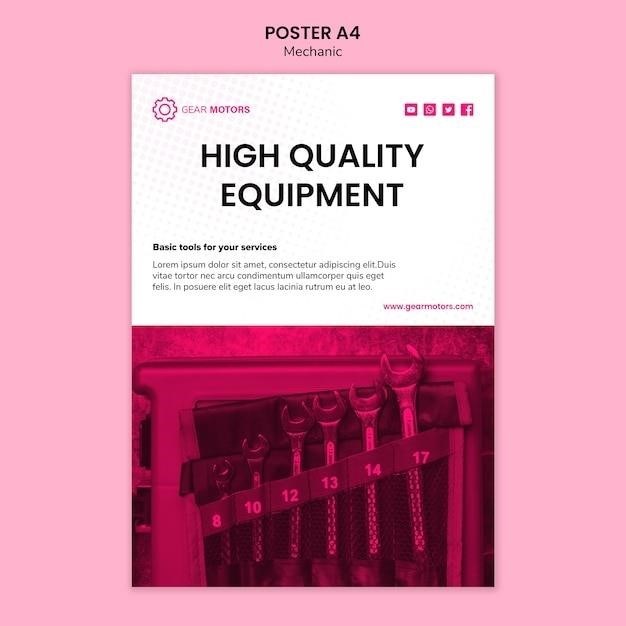iso 36002 report pdf
- by chaya

Understanding ISO 36002 Report PDFs
This section will delve into the intricacies of ISO 36002 Report PDFs, explaining their structure, common elements, and interpretation. Understanding key metrics and data visualization techniques within these reports is crucial for effective analysis. We will explore how to locate these valuable documents online and effectively utilize the information contained within.
What is ISO 36002?
While the provided text doesn’t directly define ISO 36002, we can infer its nature from the context. Given the focus on report PDFs and the mention of other ISO standards (like ISO 26000, ISO 9001, and ISO 27001), ISO 36002 likely represents a specific standard or guideline related to reporting, auditing, or management systems. It’s probable that ISO 36002 outlines a framework for creating standardized reports, specifying requirements for content, format, and presentation. These reports may cover various aspects of an organization’s operations, performance, or compliance with other standards. The specific subject matter covered by ISO 36002 reports would need to be determined by consulting the standard itself. The structure and content of these reports are likely to be highly formalized to ensure consistency and clarity across different organizations and industries. Further research into the ISO 36002 standard is necessary to gain a complete understanding of its scope and application.
Common Elements in ISO-Based Reports
Many ISO-based reports, regardless of the specific standard, share common structural elements; A title page clearly identifying the report, its purpose, and the organization issuing it is standard. An executive summary provides a concise overview of key findings and conclusions. A detailed introduction explains the scope, methodology, and objectives of the report. The main body presents the findings in a structured manner, often using tables, charts, and graphs to visualize data. A conclusion section summarizes the key findings and offers recommendations or insights. References and appendices provide supplementary information or data. A detailed description of the system or process under review is frequently included, clarifying the context of the findings. Compliance statements or management assertions confirming the accuracy of the information are also typical. Finally, a list of any non-conformances or areas needing improvement often concludes the report, providing actionable steps for improvement.
Structure of a Typical ISO Report
While the precise structure may vary depending on the specific ISO standard and the organization issuing the report, a common framework exists. Typically, an ISO report begins with a cover page containing essential identification details. This is followed by a table of contents, providing a roadmap through the document. An executive summary offers a condensed version of the report’s key findings and conclusions. The main body of the report often follows a logical progression, presenting information in a clear and structured manner. This might involve separate sections for each aspect assessed, each containing detailed analysis and supporting evidence. Visual aids, such as charts and graphs, are frequently incorporated to enhance comprehension. A concluding section summarizes the overall findings and may include recommendations for improvement. Finally, references and appendices may include supporting documentation, data tables, or other supplementary materials. This structured approach ensures consistency and facilitates efficient navigation and comprehension of the report’s content.
Key Sections of an ISO Report⁚ Examples
Illustrative examples of key sections within an ISO report could include a detailed description of the audited system, outlining its functionalities and components. Another critical section would present the methodology employed during the audit, specifying the techniques and standards followed. This ensures transparency and allows for independent verification. A dedicated section would present the findings, categorized according to their significance (e.g., major non-conformances, minor non-conformances, observations). Each finding would be clearly described, referencing specific evidence or instances. A section detailing the conclusions drawn from the findings would follow, summarizing the overall assessment of the system’s compliance. Finally, a section outlining recommendations for improvements would offer actionable steps to address identified non-conformances and enhance the system’s performance. The inclusion of these key sections ensures a comprehensive and informative report, facilitating informed decision-making.
Data Presentation and Visualization in ISO Reports
Effective data presentation is paramount in ISO reports for clear communication of complex information. Tables are commonly used to present quantitative data in an organized manner, facilitating easy comparison and analysis of different metrics. Graphs and charts, such as bar charts, pie charts, and line graphs, provide visual representations of trends and patterns, enhancing comprehension. The choice of visualization technique depends on the nature of the data and the message intended. Clear labeling of axes, legends, and data points is crucial for accurate interpretation. Consistent formatting and use of color schemes maintain visual coherence and enhance readability. Where applicable, maps can effectively display geographical distribution of data. The use of infographics can combine visual elements with concise text summaries, simplifying complex information. Careful consideration of these elements ensures the report’s data is both accessible and impactful.

Finding ISO 36002 Report PDFs Online
This section guides you through effective online searches for ISO 36002 report PDFs, utilizing specific keywords and exploring relevant databases and repositories to access these crucial documents.
Searching for Specific Reports
Locating specific ISO 36002 reports online requires a strategic approach. Begin by identifying the precise subject matter or industry focus of the report you need. This specificity is critical for refining your search queries and filtering irrelevant results. Consider using advanced search operators within search engines such as Google, Bing, or specialized research databases. These operators allow for more precise targeting. For example, using quotation marks around a specific phrase ensures that only results containing that exact phrase are returned. The inclusion of relevant keywords such as “ISO 36002,” along with industry-specific terms, will significantly narrow your search results. Remember to explore various search engines and databases, as different platforms may index different collections of documents.
Furthermore, exploring organizational websites of relevant industries or regulatory bodies is another effective method; Many organizations make their reports publicly available on their websites. Don’t hesitate to utilize the “site⁚” operator in your search to confine your results to a specific website. This focused approach reduces the number of irrelevant search results and improves efficiency in finding the desired information.
Utilizing Relevant Keywords
Effective keyword selection is paramount when searching for ISO 36002 report PDFs online. Start by identifying the core concepts and terms related to your search. This might include the specific industry, geographical location, or subject matter covered in the report. Think beyond simple terms; consider using synonyms, related terms, and more specific phrases to broaden your search while maintaining relevance. For example, instead of just “environmental impact,” you might try “environmental sustainability,” “carbon footprint,” or “ecological effects.” Experiment with different keyword combinations to see which yield the best results. Boolean operators like “AND,” “OR,” and “NOT” can help to refine searches and exclude irrelevant information. Using quotation marks around specific phrases ensures that the search engine looks for exact matches.
Remember to analyze the results carefully. If your initial search yields too many or too few results, adjust your keywords accordingly. Consider adding more specific terms if the results are too broad, or broaden your terms if the results are too limited. Iterative refinement of your keyword strategy is crucial for successful online searches and finding the specific ISO 36002 reports you need.
Accessing Databases and Repositories
Beyond general web searches, dedicated databases and repositories significantly improve your chances of finding ISO 36002 report PDFs. Many organizations and institutions maintain extensive collections of industry-specific reports, often including those compliant with ISO standards. These repositories frequently offer advanced search functionalities, allowing for more precise filtering and retrieval based on various parameters such as date, keywords, and geographic location. Government websites, academic libraries, and professional associations are prime sources for such databases. Explore industry-specific websites and publications; many professional organizations maintain searchable archives of relevant documents. Subscription-based databases, while often requiring fees, offer comprehensive, curated collections and advanced search capabilities, making them valuable resources for in-depth research and access to a wider range of reports.
Always verify the credibility and authenticity of any report before relying on its information. Check the source’s reputation and look for evidence of peer review or independent verification. Remember that not all online resources are equally reliable; a critical approach is crucial when using information from multiple sources.

Interpreting Information in an ISO 36002 Report PDF
This section focuses on deciphering the data within ISO 36002 reports, explaining key metrics and indicators to facilitate a thorough understanding of the presented information and its implications. Effective interpretation requires careful analysis of the report’s structure and content.
Understanding Key Metrics and Indicators
Interpreting ISO 36002 reports hinges on a thorough understanding of the key metrics and indicators employed. These metrics, often specific to the industry or sector being assessed, provide quantifiable data reflecting performance against established standards. Familiarizing oneself with these metrics is crucial for accurate interpretation of the report’s findings. The specific metrics used will vary depending on the context of the audit or assessment, but common examples might include efficiency ratios, compliance rates, or defect rates, depending on the nature of the system or process being evaluated. A lack of understanding of these key metrics can lead to misinterpretations of the report’s conclusions and recommendations. Therefore, it’s vital to carefully review the definitions and methodologies used to calculate each metric within the report itself. This ensures that the data is interpreted accurately and meaningfully, avoiding potentially costly misunderstandings. Cross-referencing the metrics with industry benchmarks can further enhance the analysis and provide valuable context for evaluating performance.
Download your free ISO 36002 PDF report now! Learn how to handle customer complaints effectively and build stronger customer relationships. Boost your business reputation and compliance with this essential guide. Get your copy today!